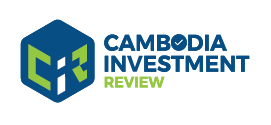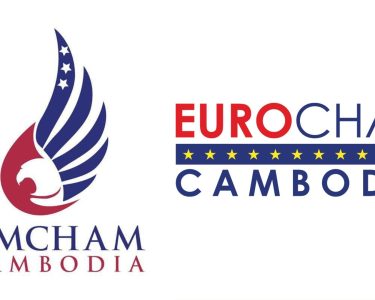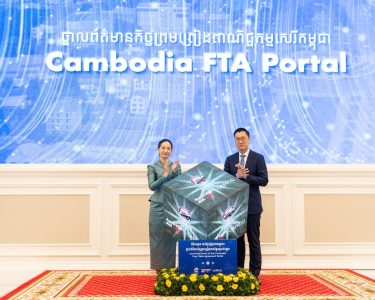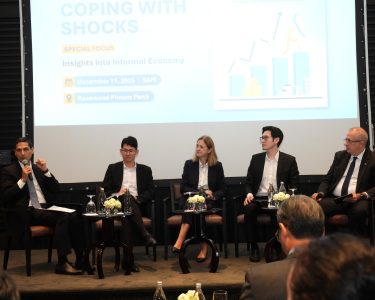CIR Laos
The macroeconomic landscape in Lao PDR is showing signs of improvement, with inflation easing to single digits and the kip stabilizing following recent policy reforms. However, persistent concerns over external debt sustainability and global uncertainties continue to pose risks to the country’s economic outlook, according to the latest assessment by the ASEAN+3 Macroeconomic Research Office (AMRO).
The findings emerged from AMRO’s Annual Consultation Visit to Lao PDR, held from July 16 to 30, 2025. The mission was led by AMRO Deputy Group Head Cuc Thi Kim Nguyen, alongside Director Yasuto Watanabe and Chief Economist Dong He. Their discussions with government officials focused on economic prospects, challenges, and necessary policy measures to maintain stability and support growth.
Macroeconomic Improvements and Outlook
Laos’ economy is forecasted to grow by 4.4 percent in 2025 and moderate slightly to 4.2 percent in 2026. This growth is driven primarily by strong electricity generation and continued expansion in the services sector. Inflation, which peaked at 31 percent in 2023, has since fallen sharply and is expected to moderate further in the coming year.
Read More: Laos’ Tax Landscape Evolves as Business Community Emphasizes Collaboration and Compliance
The kip has stabilized due to reforms, including the launch of a market-based digital platform facilitating direct foreign exchange trading among individuals and small businesses. This has narrowed the gap between the official and parallel exchange rates, improving market efficiency.
Fiscal consolidation efforts have yielded a record-high surplus in 2024, with another surplus expected in 2025, aligning with the government’s five-year consolidation plan. These fiscal gains have helped reduce the public debt-to-GDP ratio from its 2023 peak. Additionally, stronger exports and services, along with a temporary debt suspension to a major creditor and mandatory foreign exchange repatriation, have bolstered the balance of payments. Foreign exchange reserves rose to USD 2.6 billion as of June 2025, covering 3.1 months of imports.
Debt Sustainability and External Vulnerabilities
Despite these gains, external debt sustainability remains a critical concern. The government’s heavy debt servicing obligations, coupled with limited financing options, continue to weigh on the economy. Current reliance on ad-hoc debt suspensions and short-term foreign currency bond issuances to domestic banks risks increasing liquidity pressures in the banking system, which is already constrained by weak asset quality and thin capital buffers.
Exchange rate pressures also persist due to elevated debt repayments, which could rekindle inflation expectations if left unchecked. Moreover, a slowdown in key trading partners such as China—responsible for 25 percent of Lao exports and 60 percent of foreign direct investment inflows—could have significant spillover effects on the Lao economy amid global trade tensions.
Policy Priorities for Stability and Growth
AMRO urges Lao authorities to intensify fiscal and debt management reforms to safeguard medium-term debt sustainability. A comprehensive debt restructuring plan is deemed essential to replace the current unsustainable practices. Fiscal consolidation should focus on improving revenue mobilization and public spending efficiency within a credible medium-term framework. Long-term development of a domestic bond market could diversify financing sources and mitigate external vulnerabilities.
The reform of state-owned enterprises (SOEs), especially in the electricity sector, is critical. AMRO supports adjustments to electricity tariffs to reflect cost-recovery levels, which would strengthen the financial positions of SOEs, the government, and domestic banks. To offset potential hardship from tariff increases, targeted assistance programs for vulnerable households are recommended.
Monetary policy should remain tight to manage inflation and maintain exchange rate stability. Continued enforcement of foreign exchange regulations, transparent communication, and increased flexibility in reference exchange rates would support reserve accumulation and investor confidence.
Banking sector reforms are also imperative. Addressing weak asset quality, boosting capital buffers, and enhancing risk management and supervisory frameworks in line with international standards remain priorities.
Finally, AMRO encourages the acceleration of structural reforms aimed at fostering higher value-added production and economic diversification. Such measures would improve resilience against commodity price swings and climate-related shocks, ensuring sustainable growth.
For further context on regional economic challenges and reform efforts, see related coverage from AMRO and ASEAN economic updates.
AMRO expressed gratitude to the Lao government and stakeholders for their cooperation during the mission, emphasizing the importance of continued partnership to navigate the country’s economic challenges.





